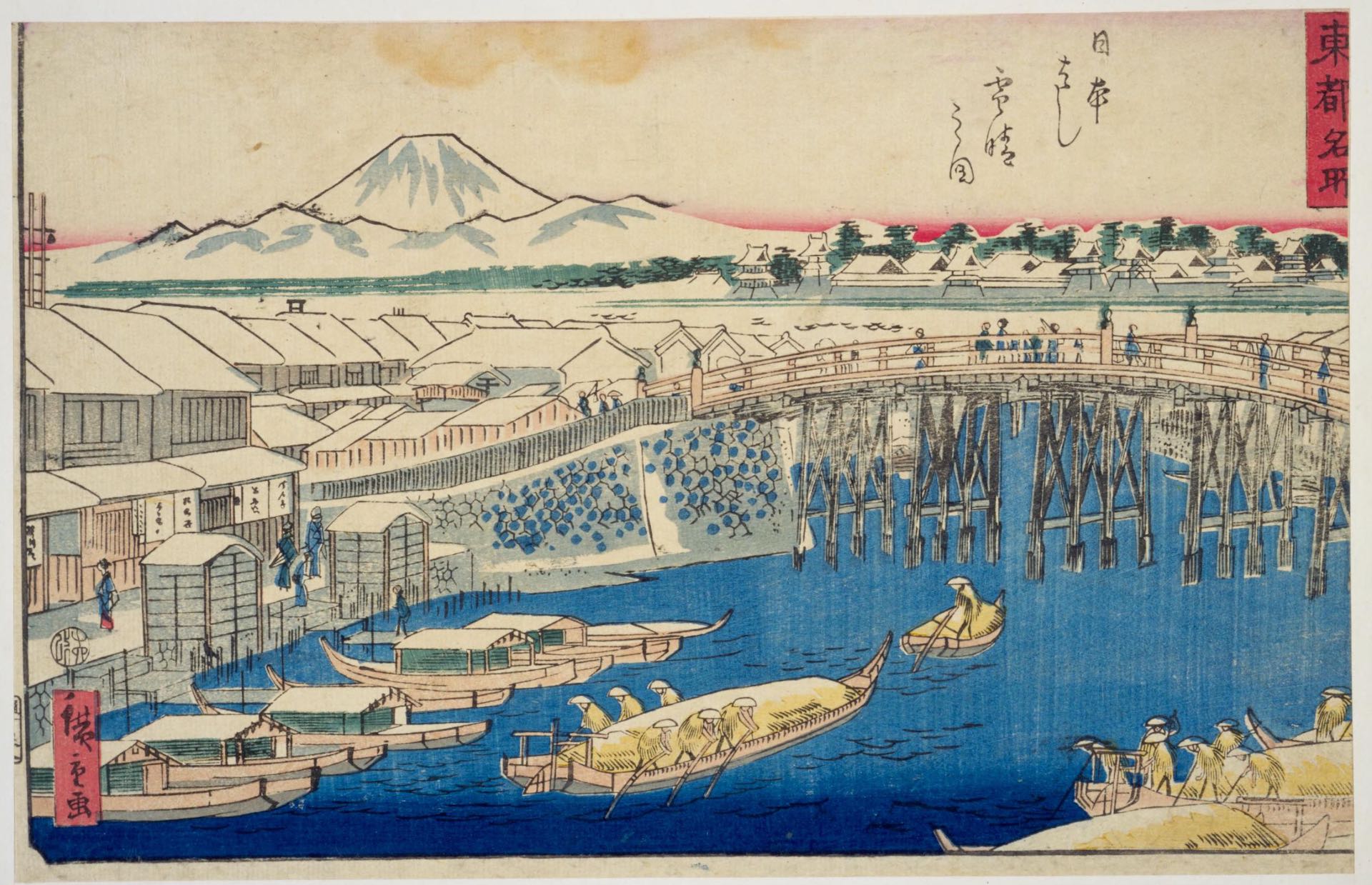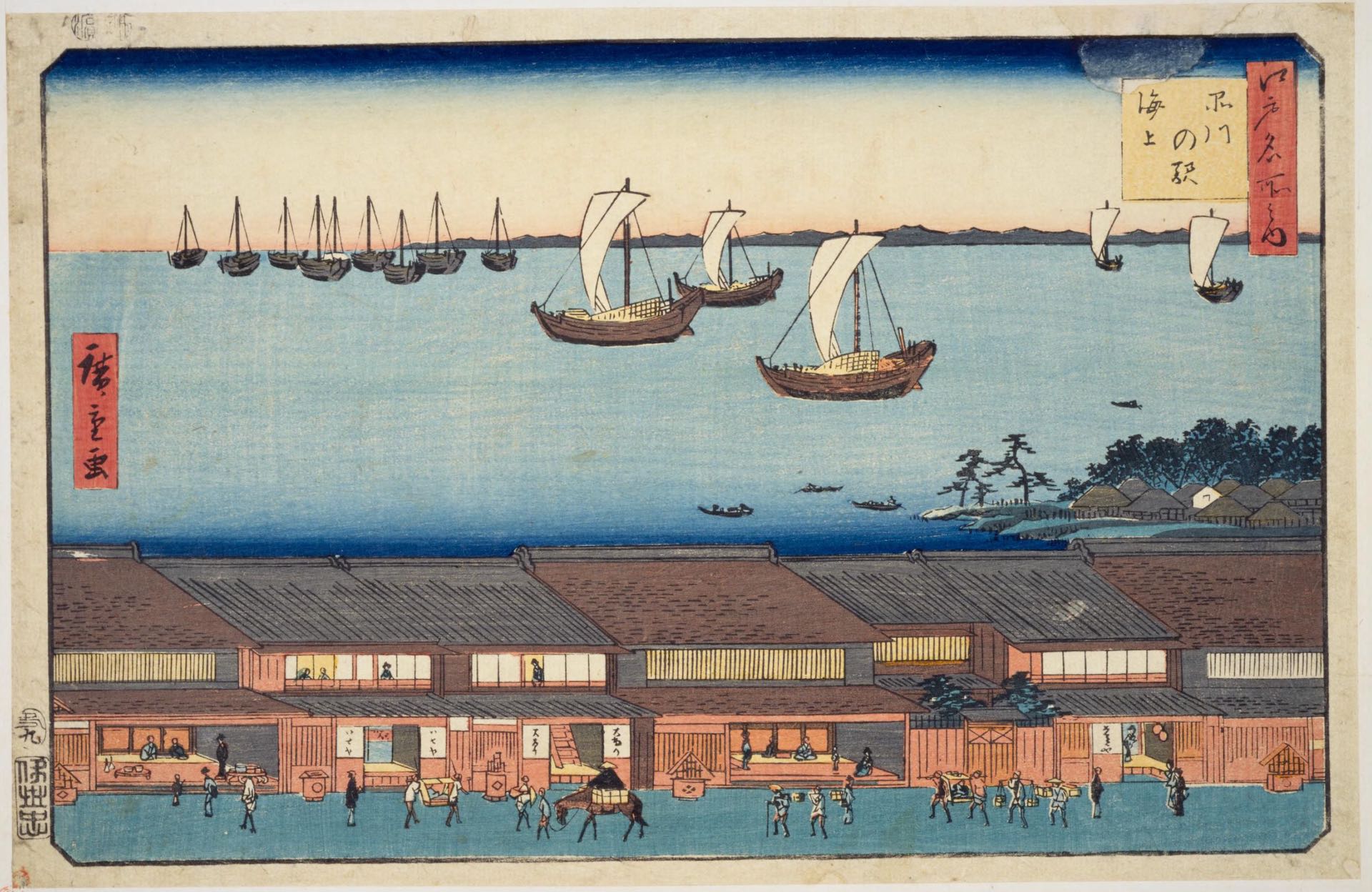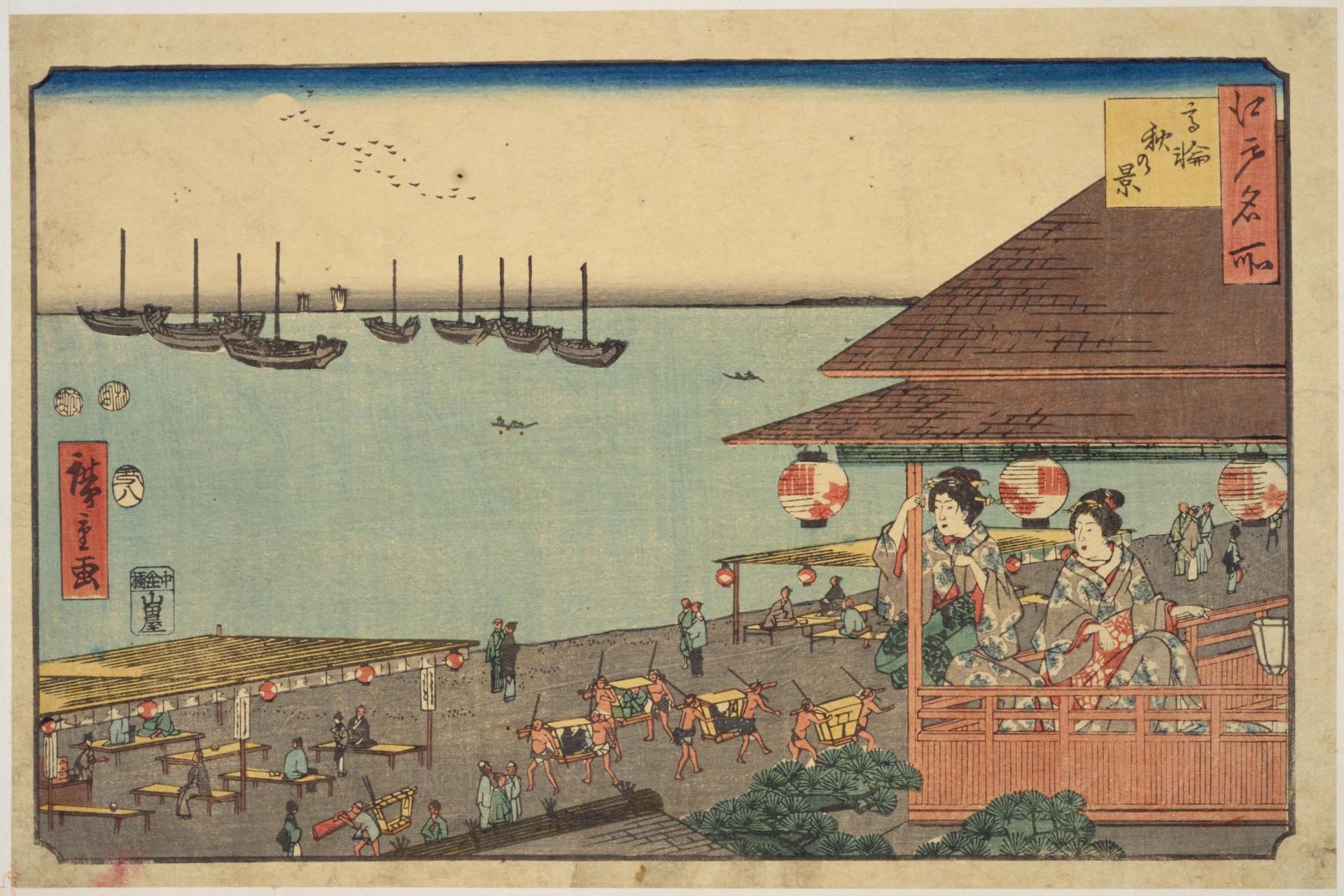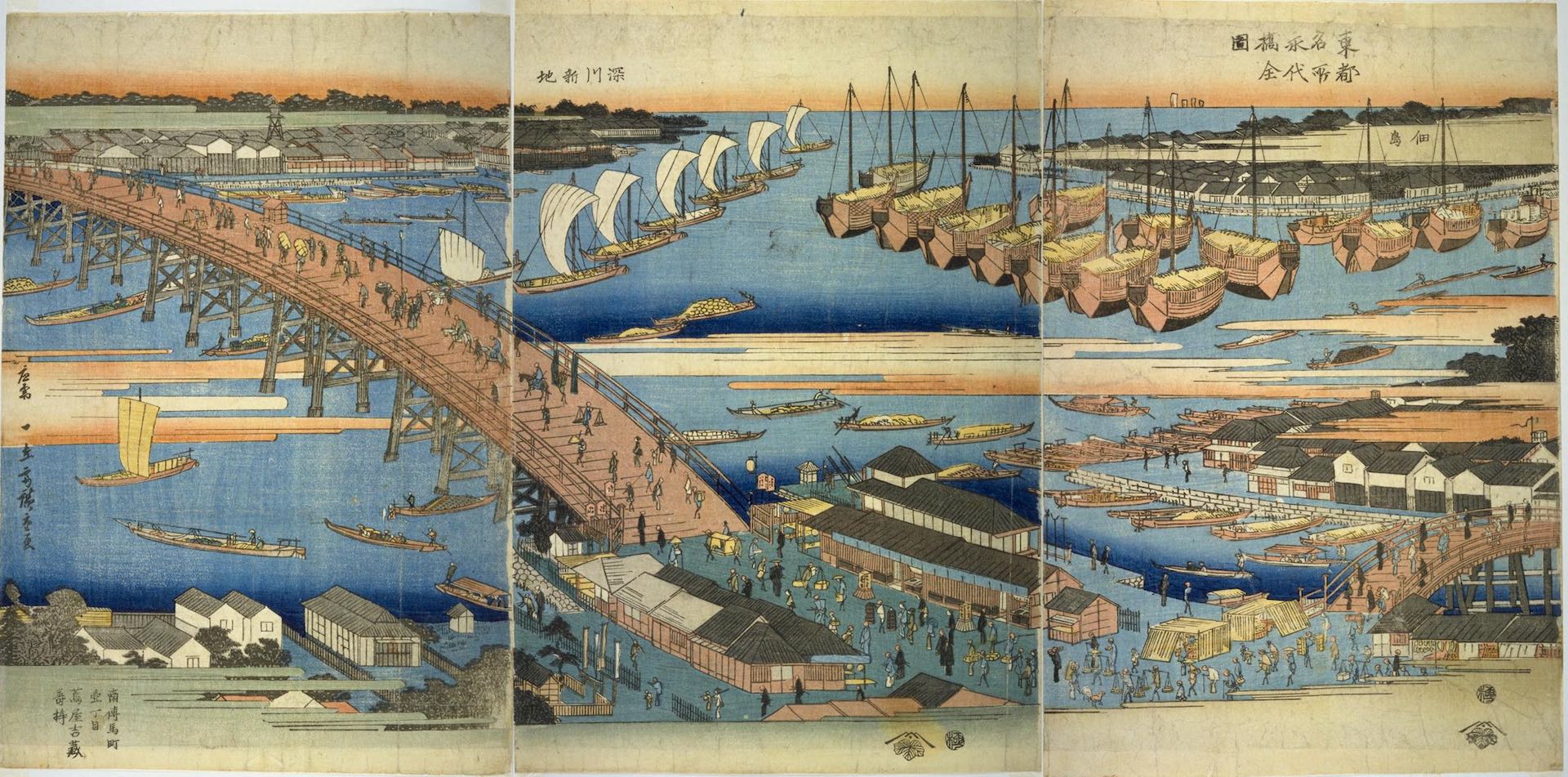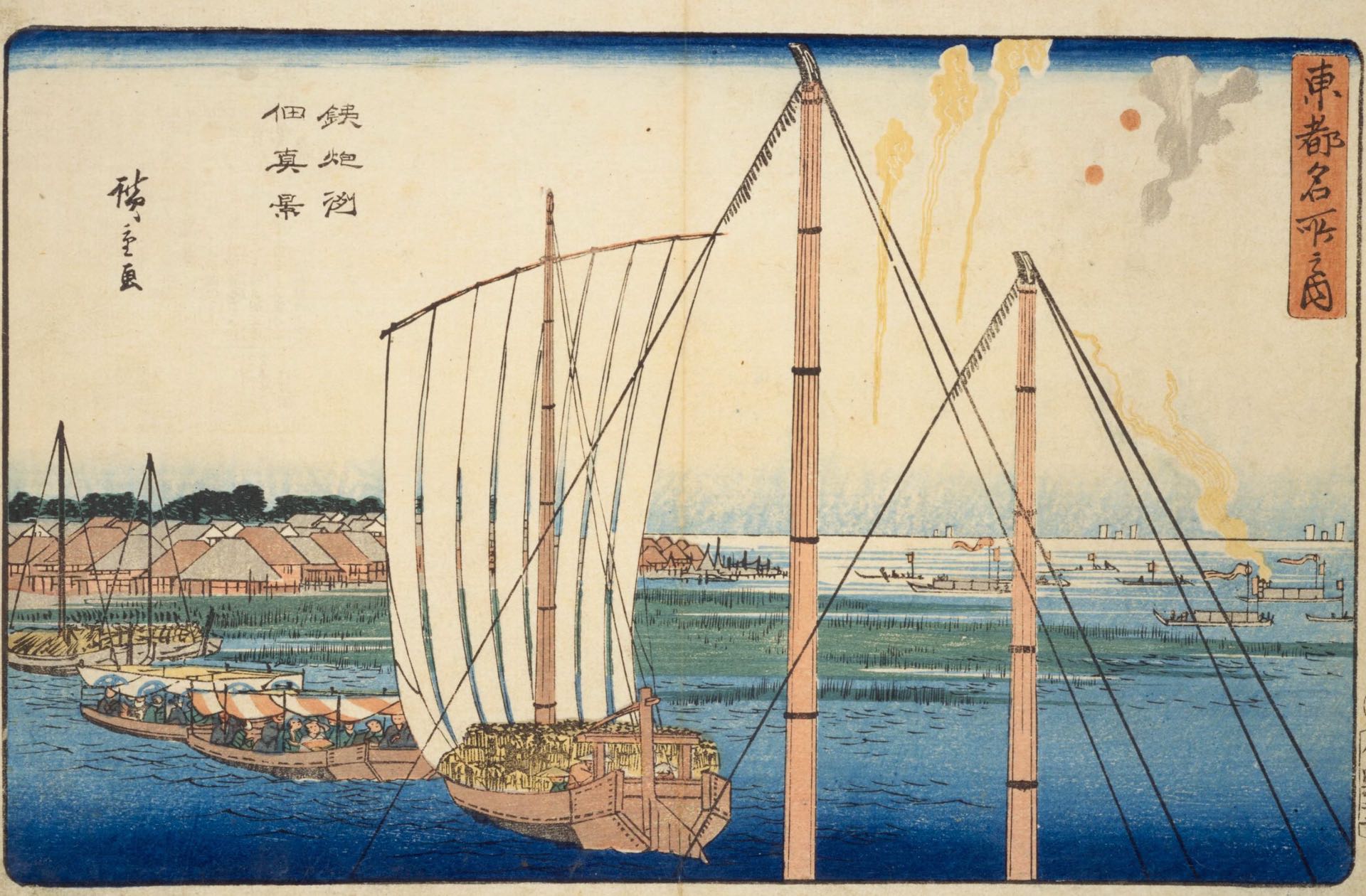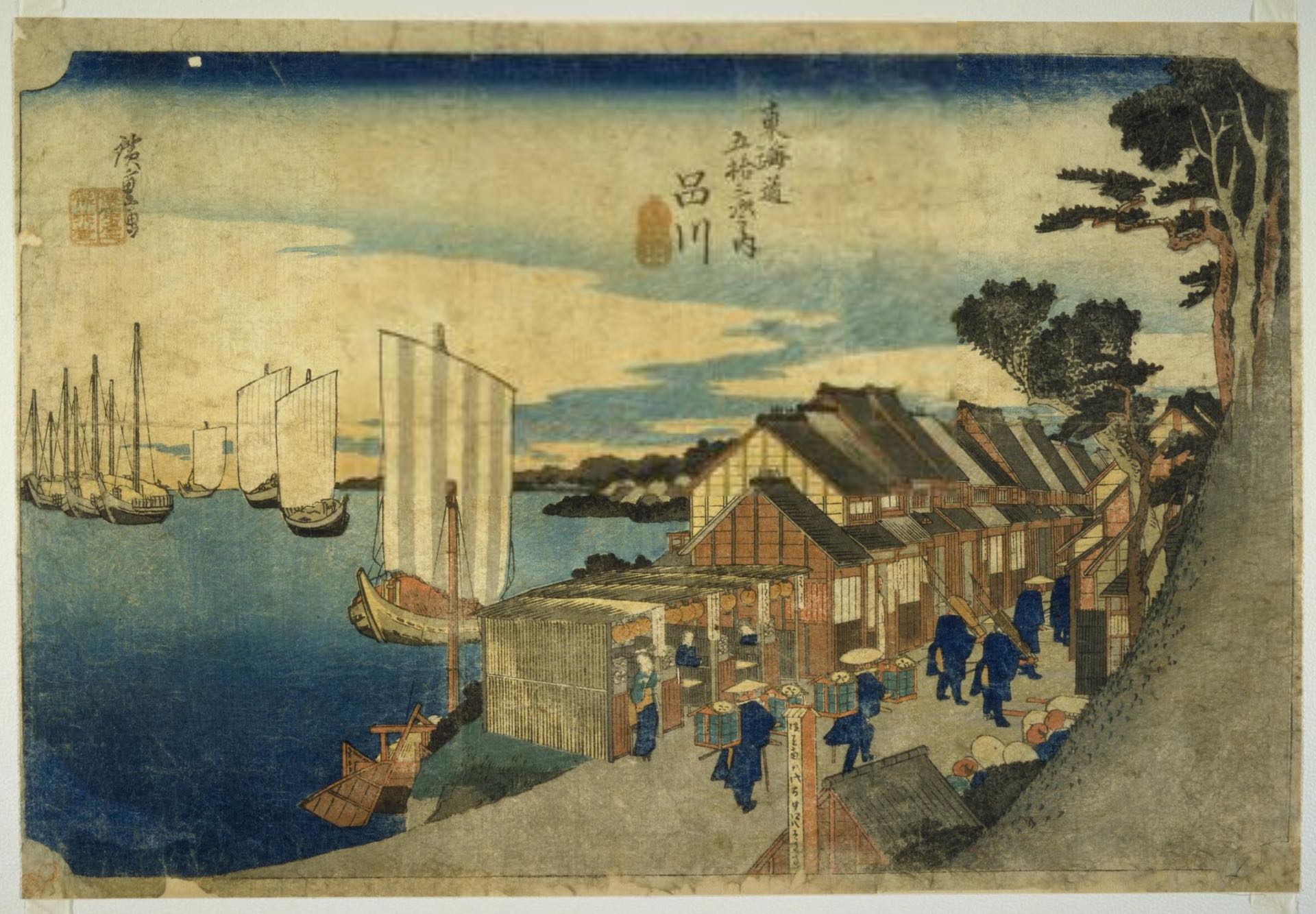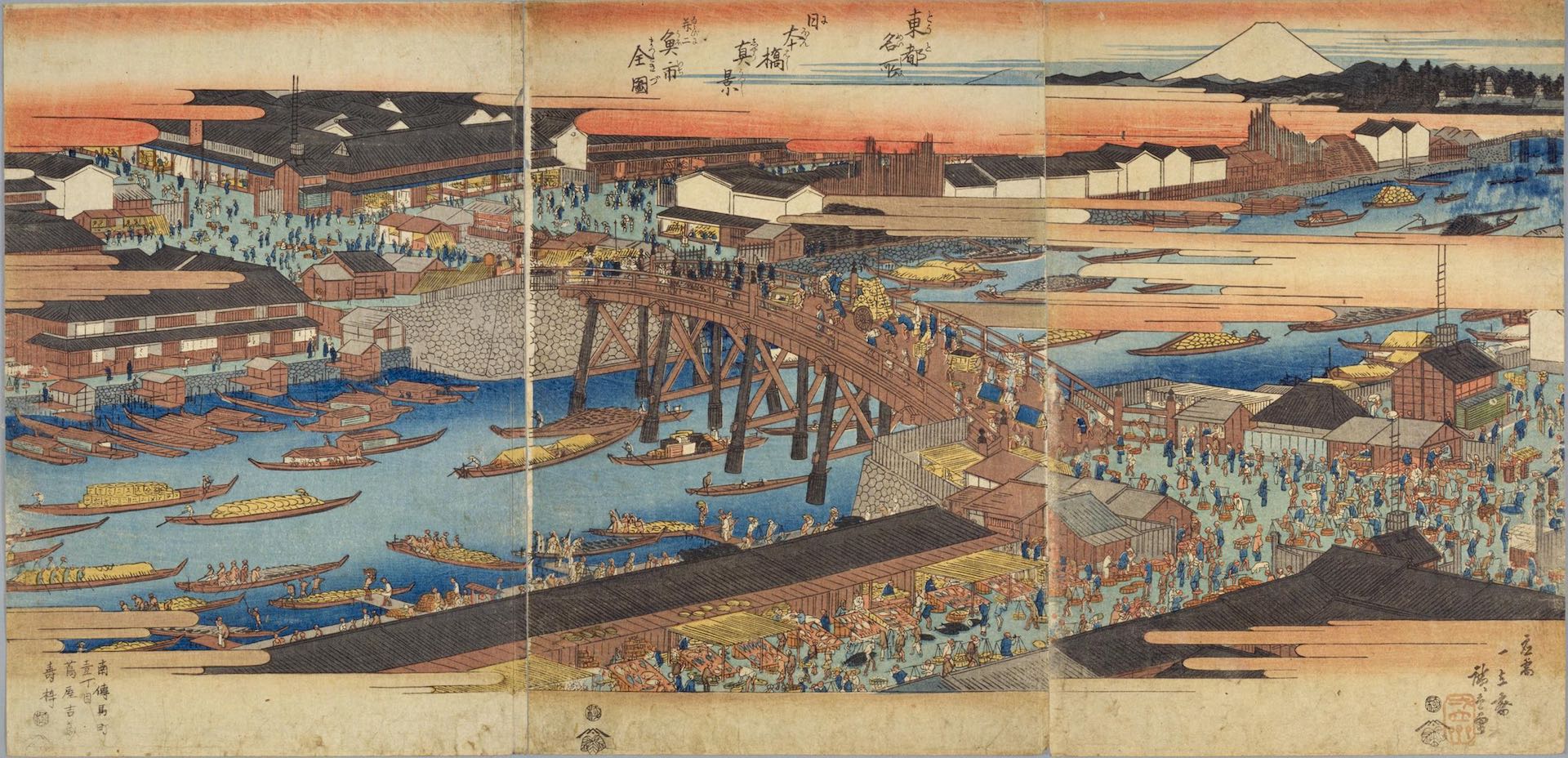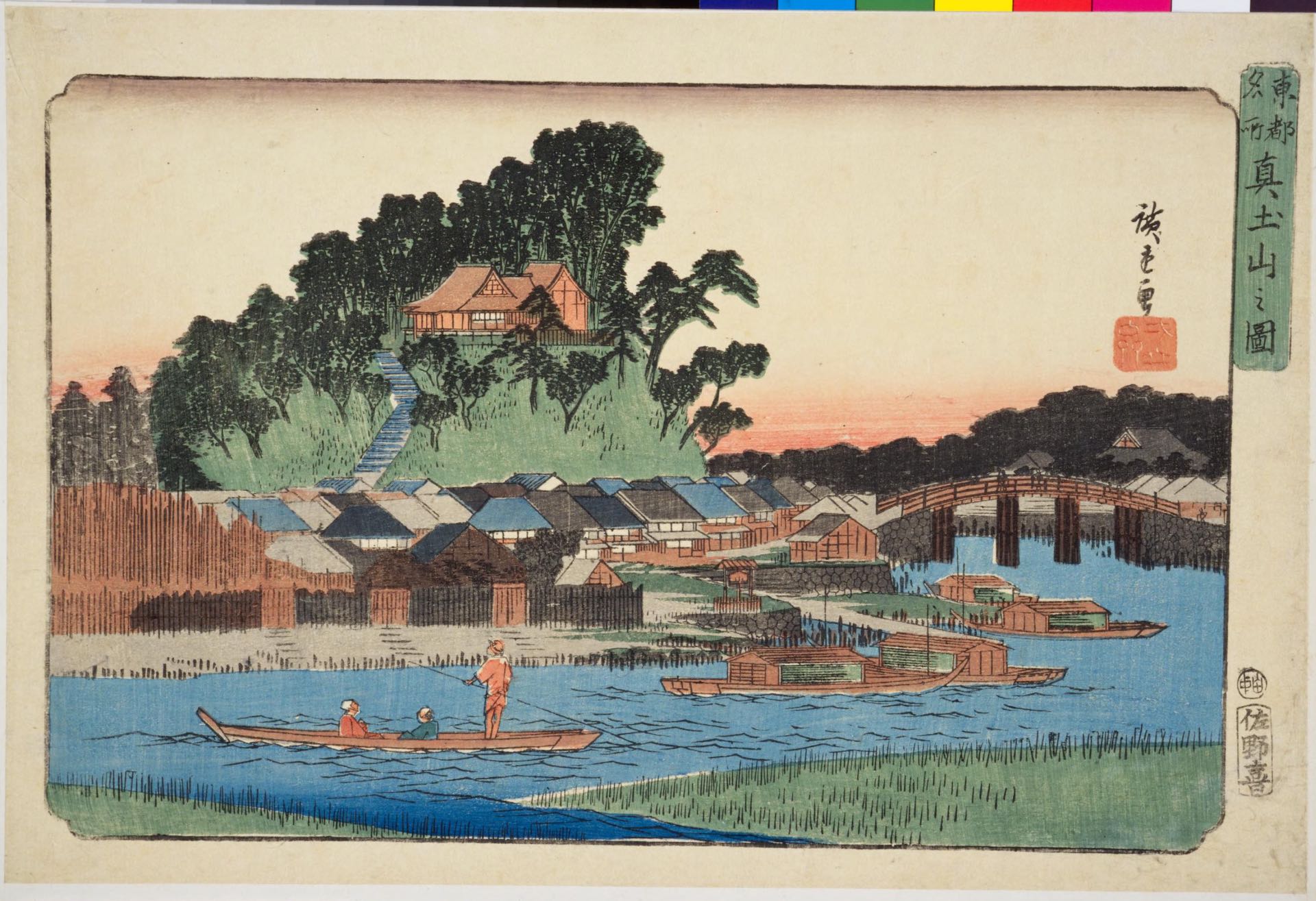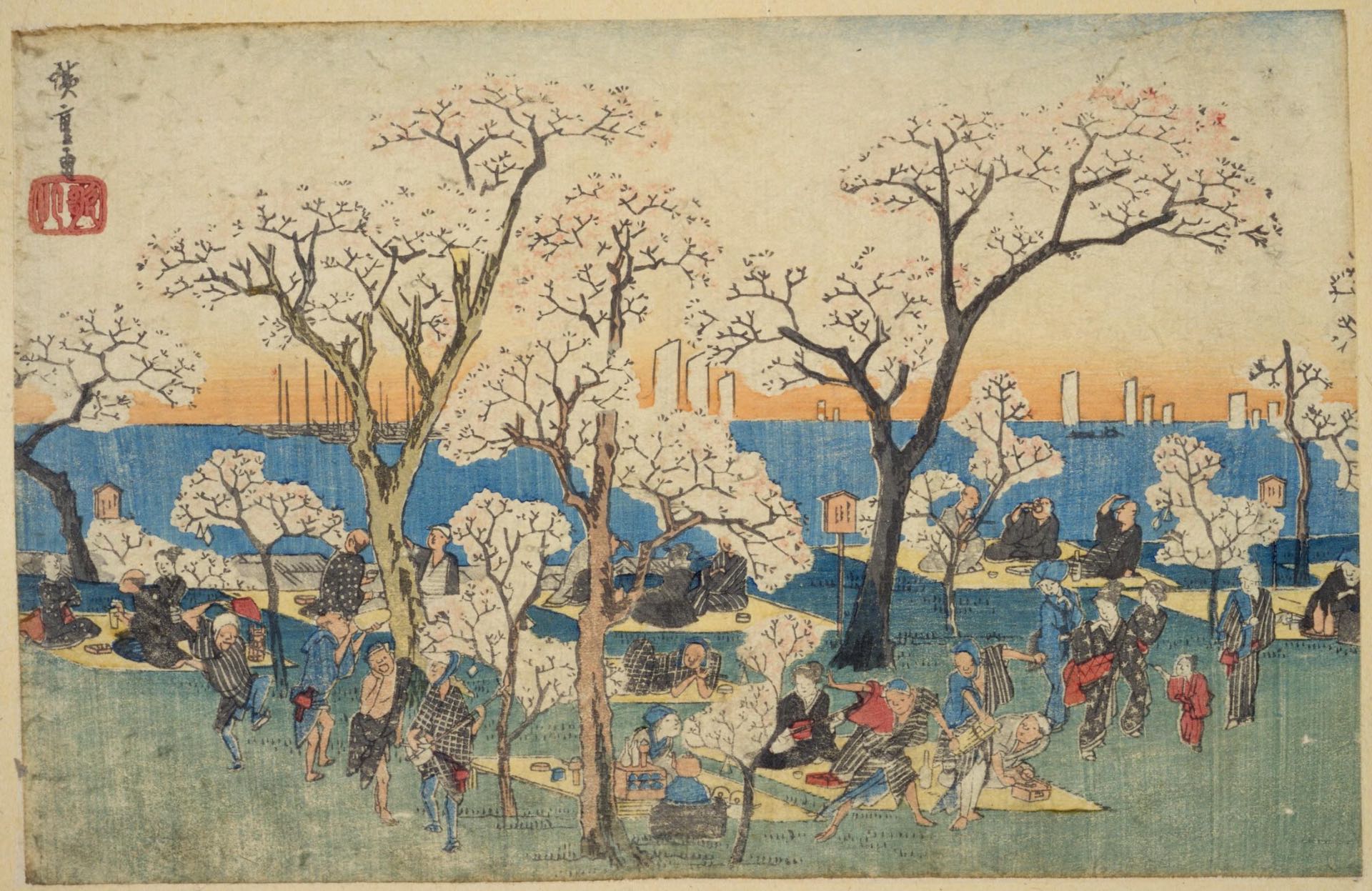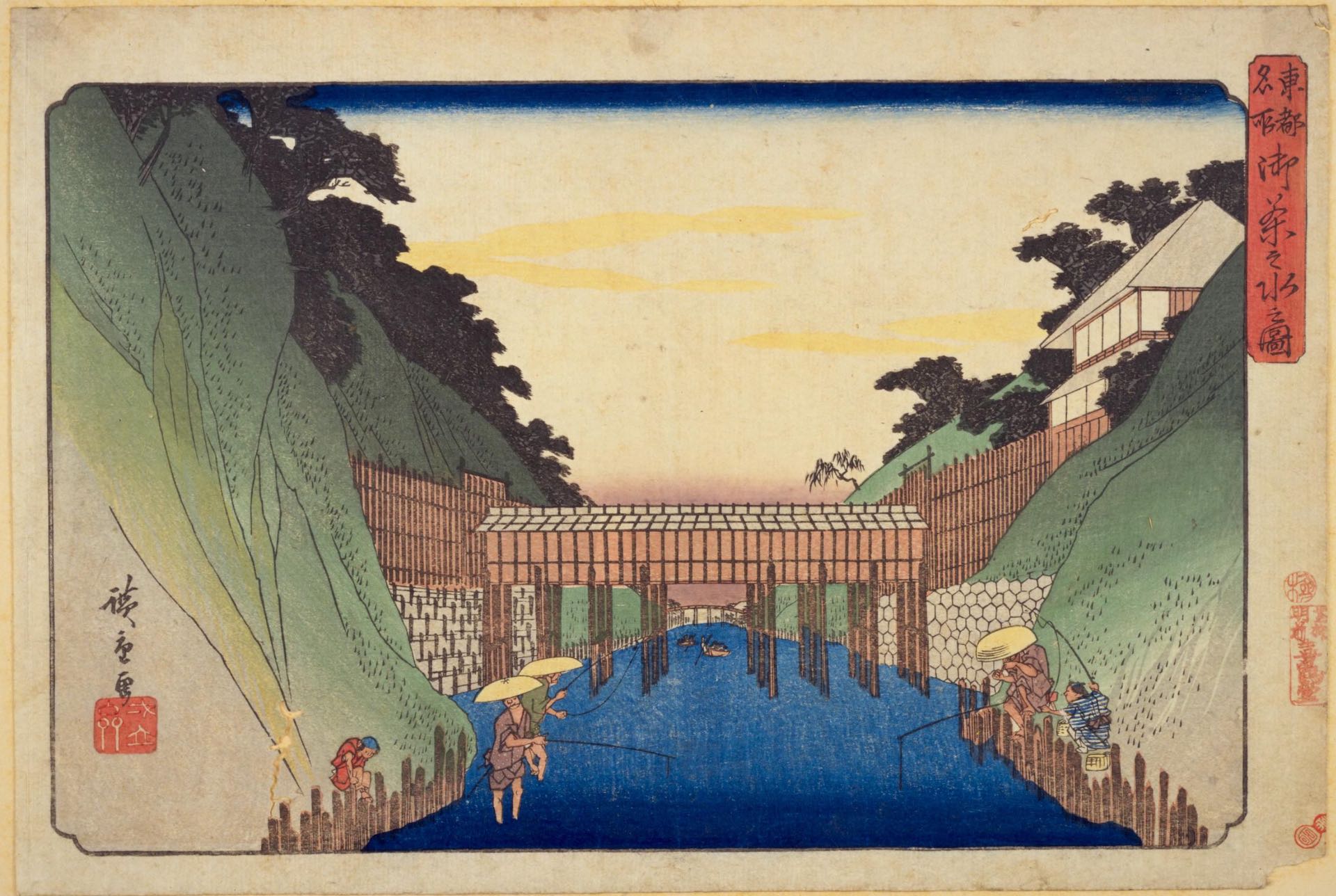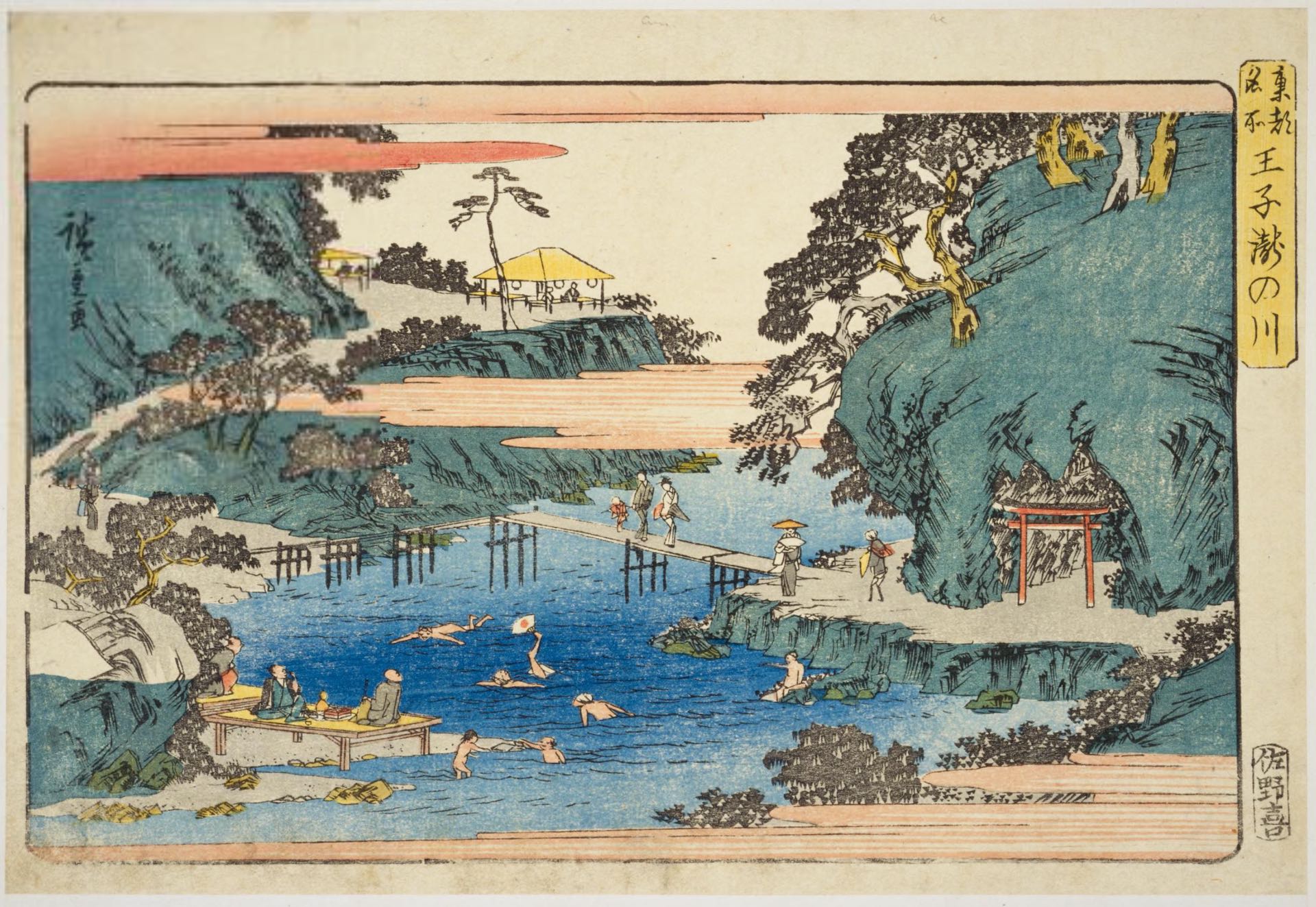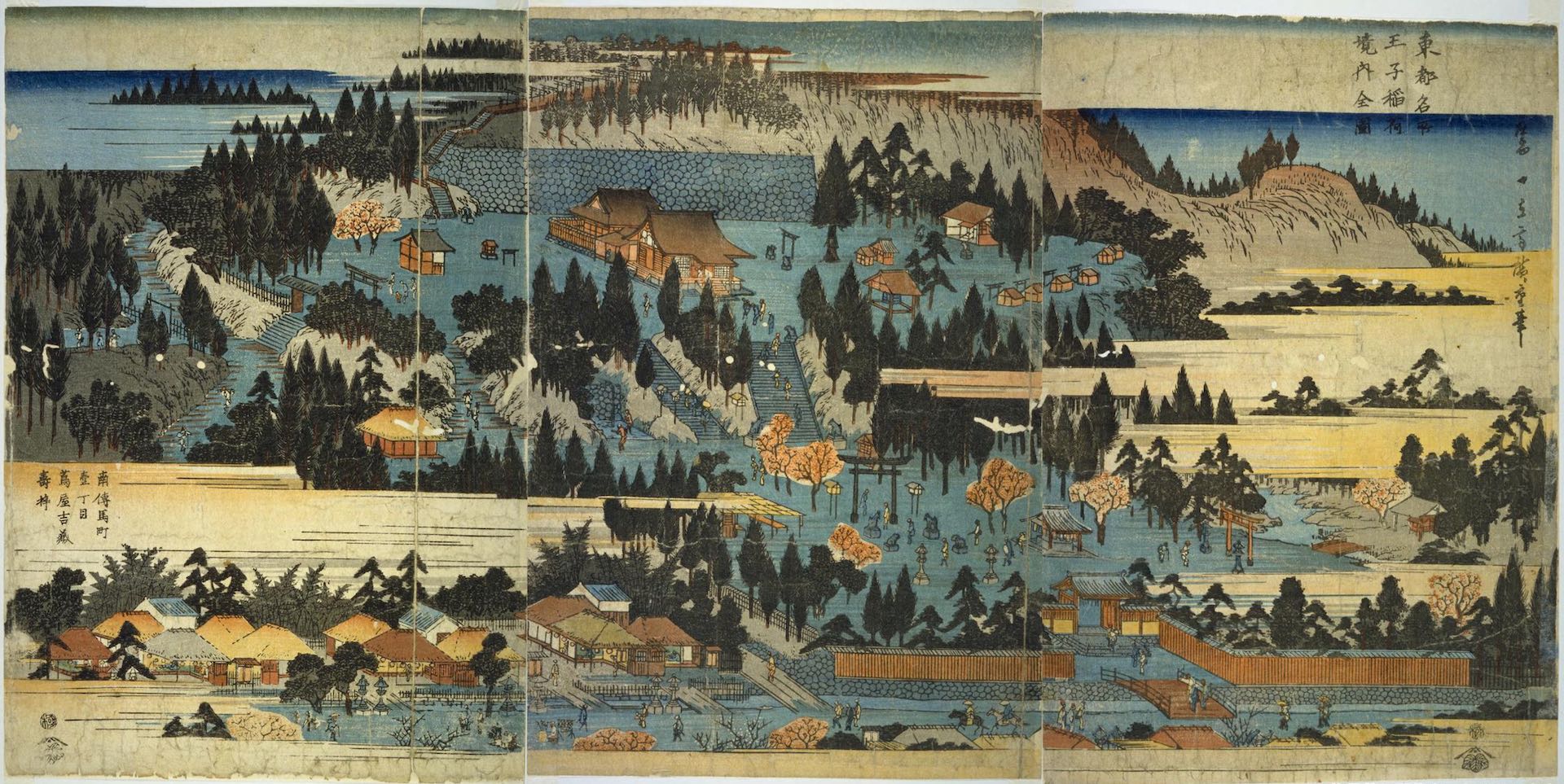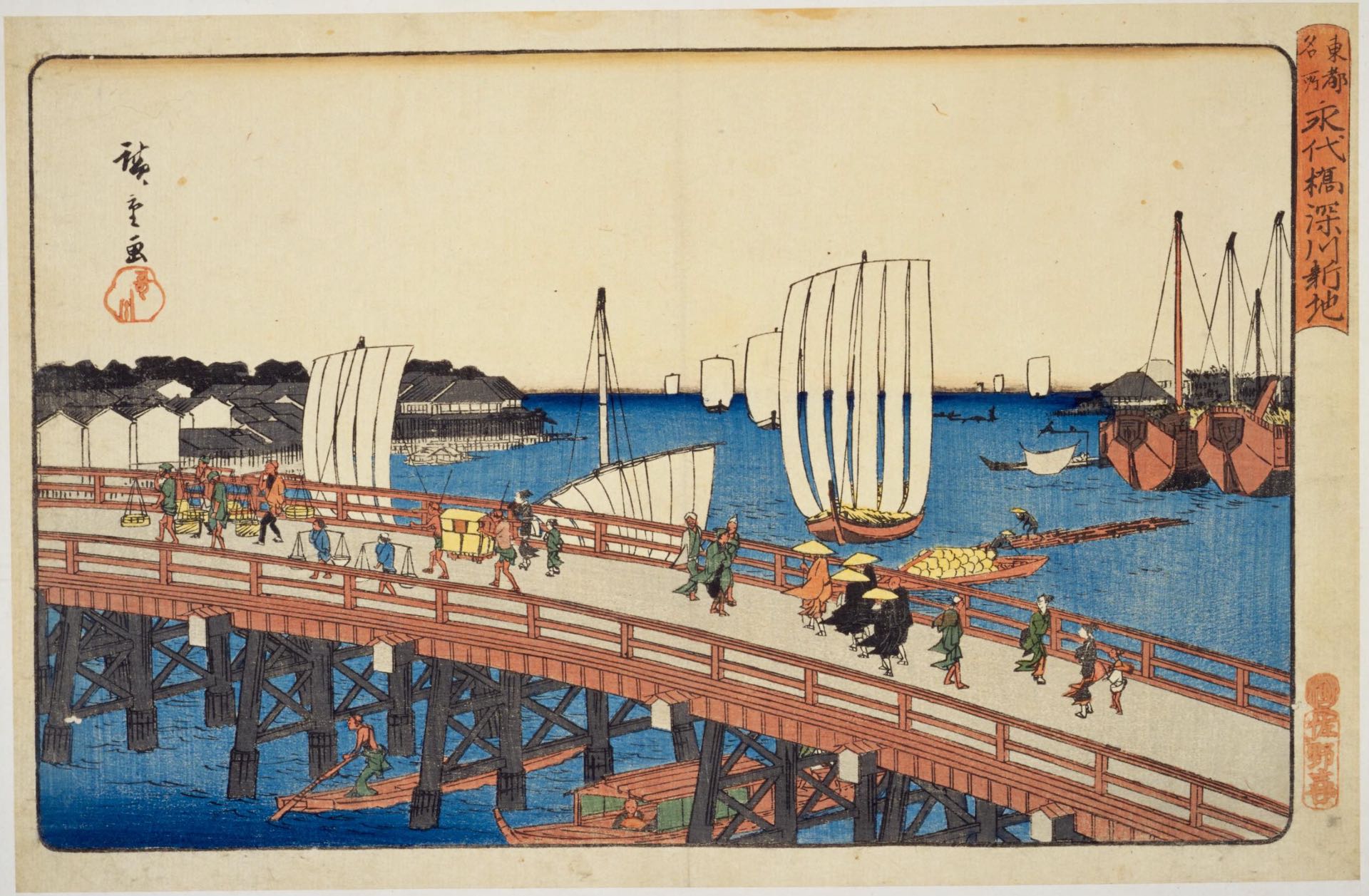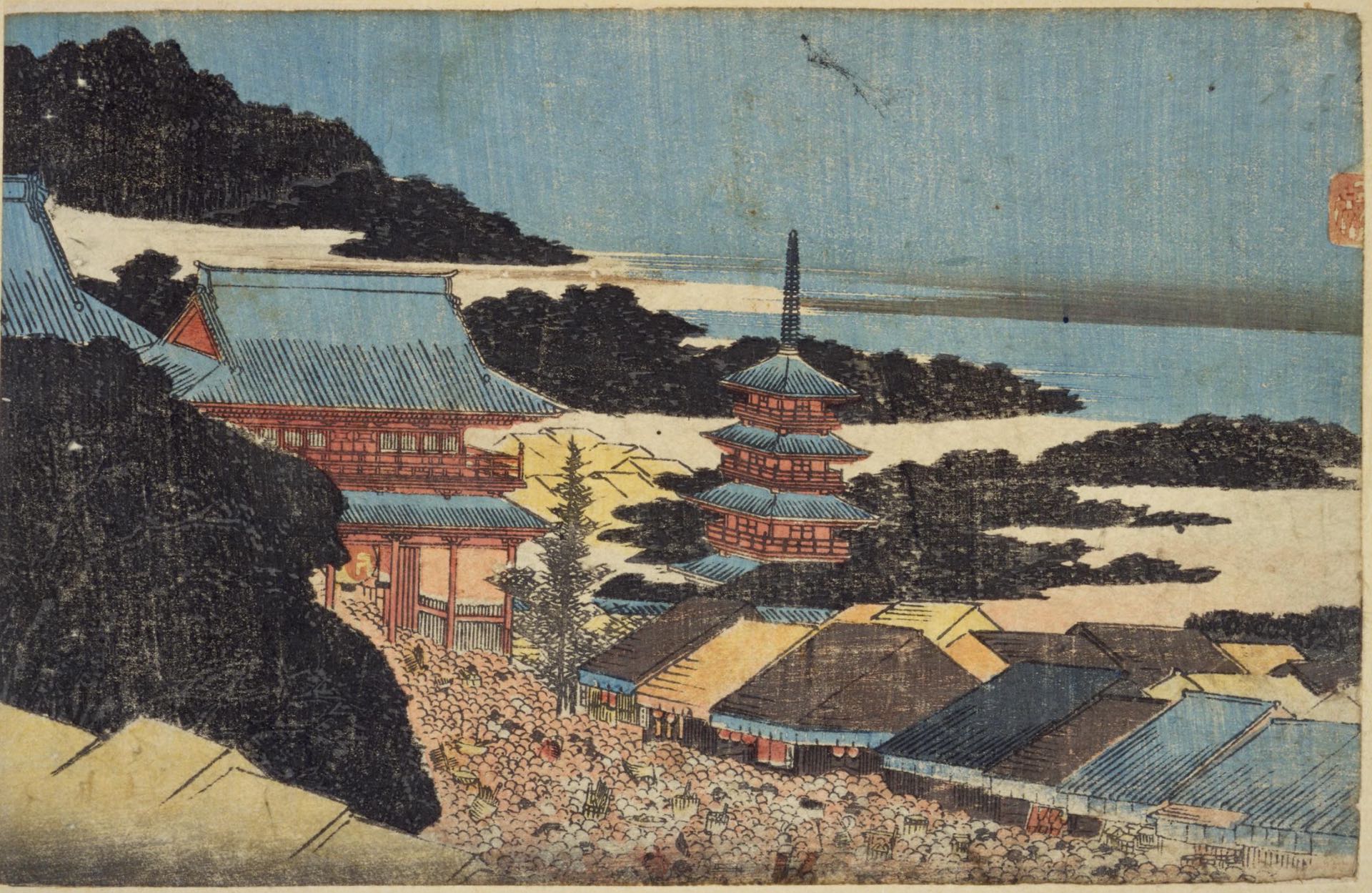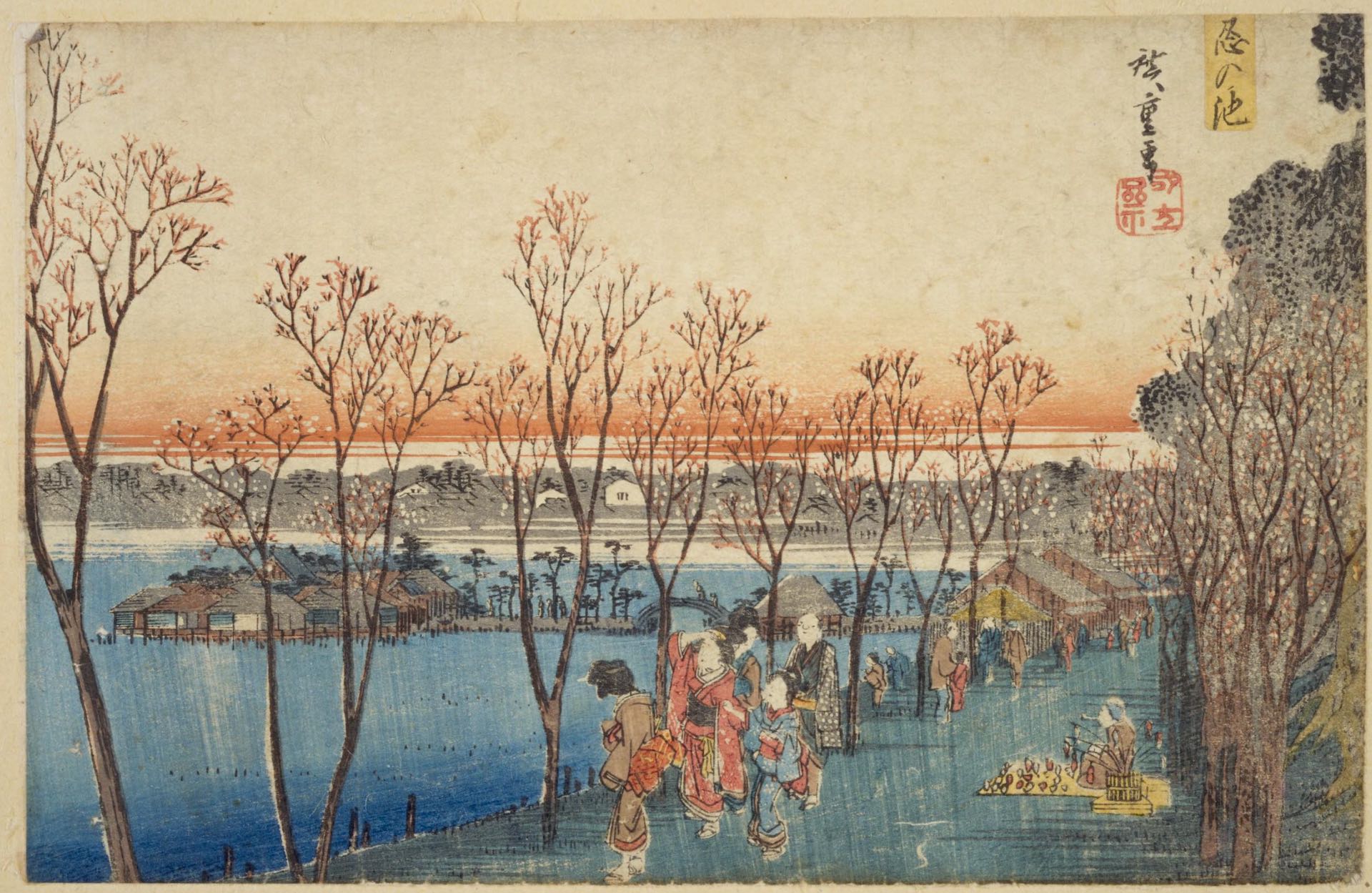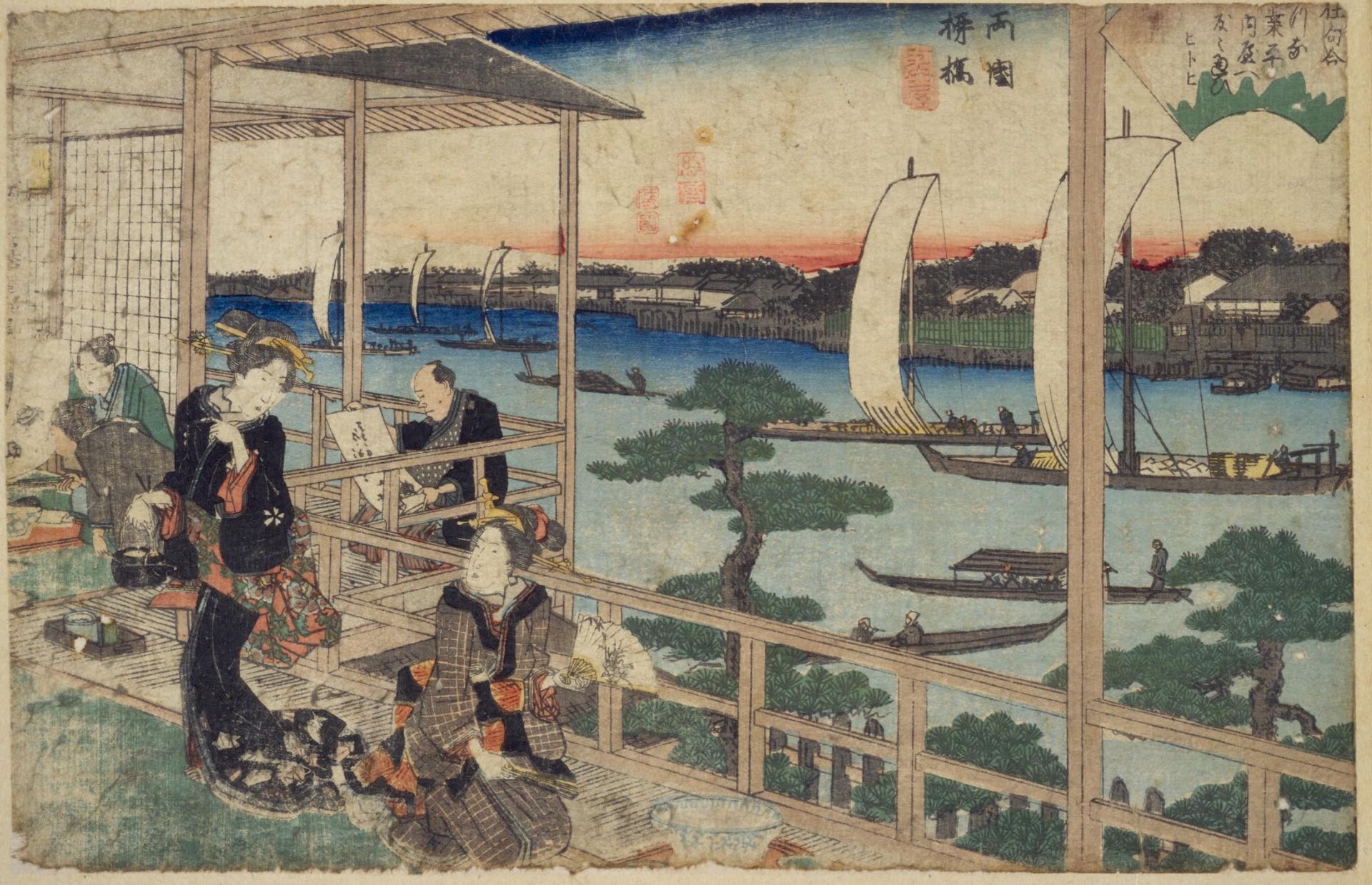Edo Network
In the Edo period, rivers were one of the important distribution routes in cities such as Edo and Osaka, and many warehouses were built around rivers.
Ukiyo-e prints by Hiroshige Utagawa and Hokusai Katsushika depict people gathering and having fun along the Sumida River.
Rivers were the cornerstone of the city’s Network.
Along with shrine precincts, rivers and their surroundings have been one of the most important public spaces in urban spaces in Japan.
In Western Europe, plazas played an important public space role. Citizens carried out various activities in the square, and the square became the center of civic life.
In Japanese cities, which historically do not have Western-style plazas, street spaces, not plazas, have played an important role as public spaces since ancient times.
At Tsuji, various activities take place, and words such as Tsuji trading and Tsuji sermon are born.
Seas and rivers were not only the cornerstones of distribution and networks, but people also enjoyed eating and drinking on boats.
Alternatively, spending time watching the seaside and eating and drinking were also one of the “Edo-like” activities.
Seaside and riverside road spaces became the basis of public spaces in Japan, and many citizens enjoyed living in the “waterside road space.”
During the Edo period, the rivers of Edo and Tokyo played a role in the network of the city of Edo.
In modern times, it is rapidly losing its value.
Ukiyo-e drawn by Hiroshige Utagawa
Edo Network Flowring Promenades
DATA
- Category:
Urban
- Type:
Research, City plan
- Location:
Tokyo
- Team:
YDS
- Size:
-
- Status:
Completed
